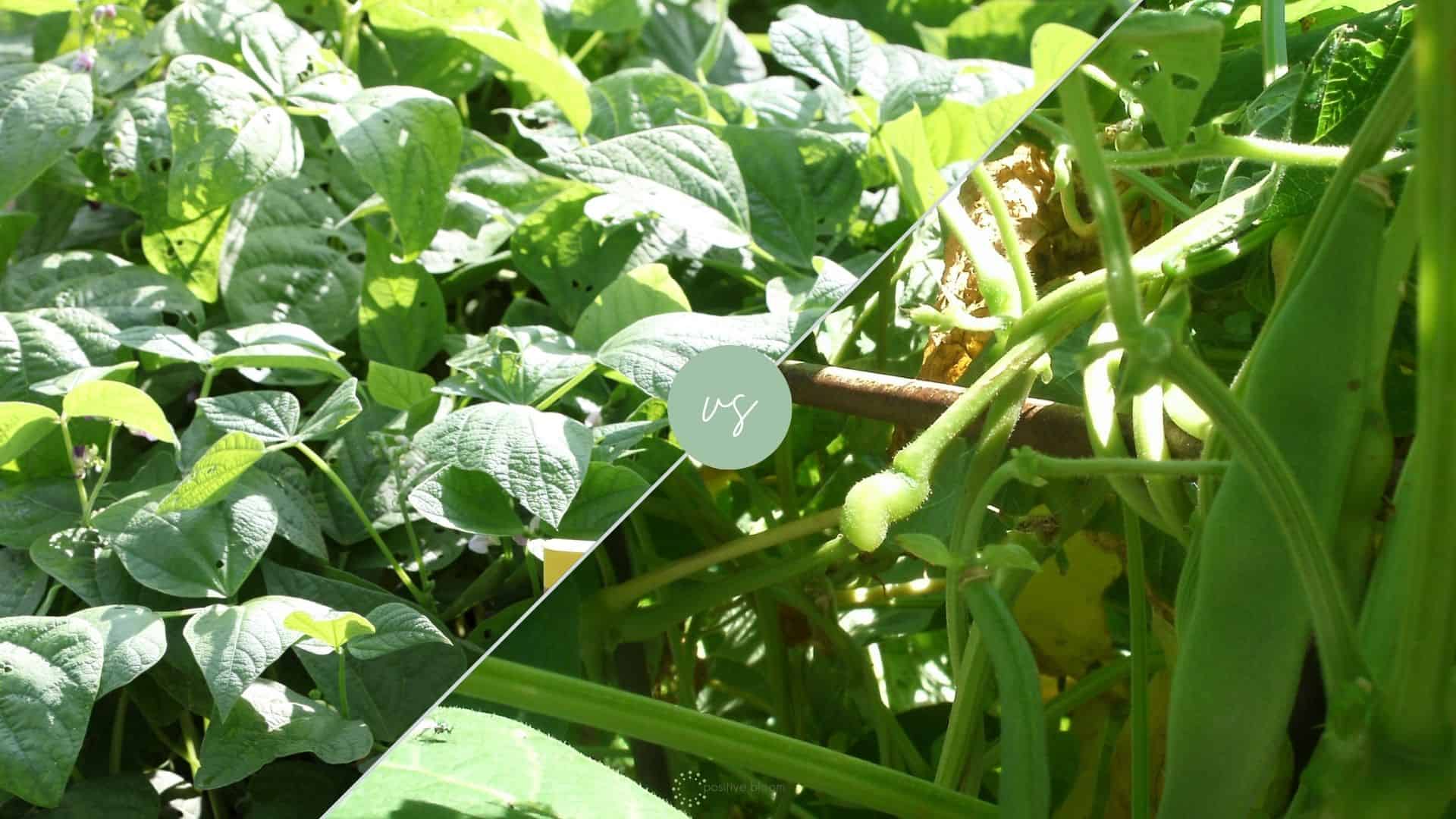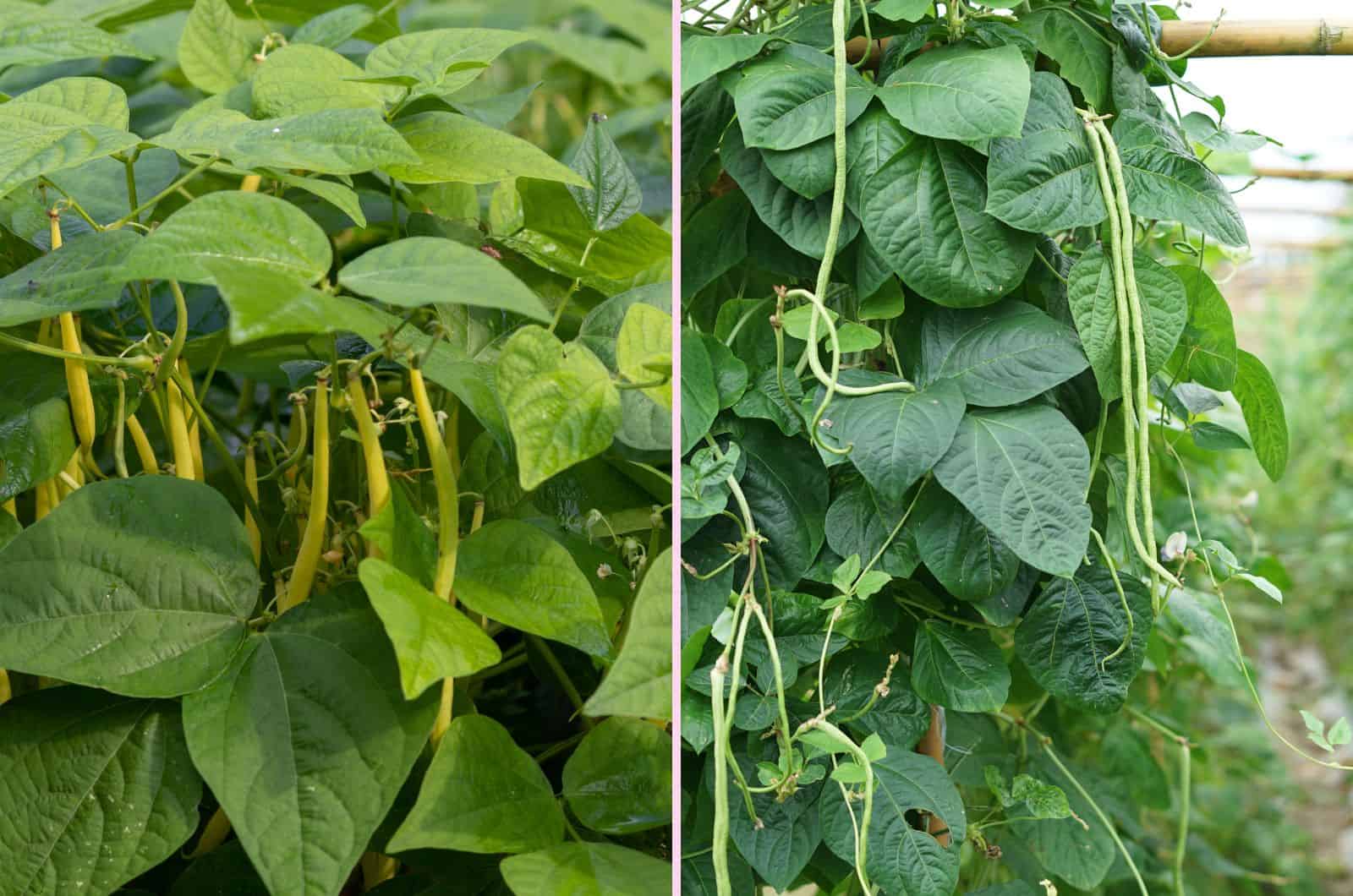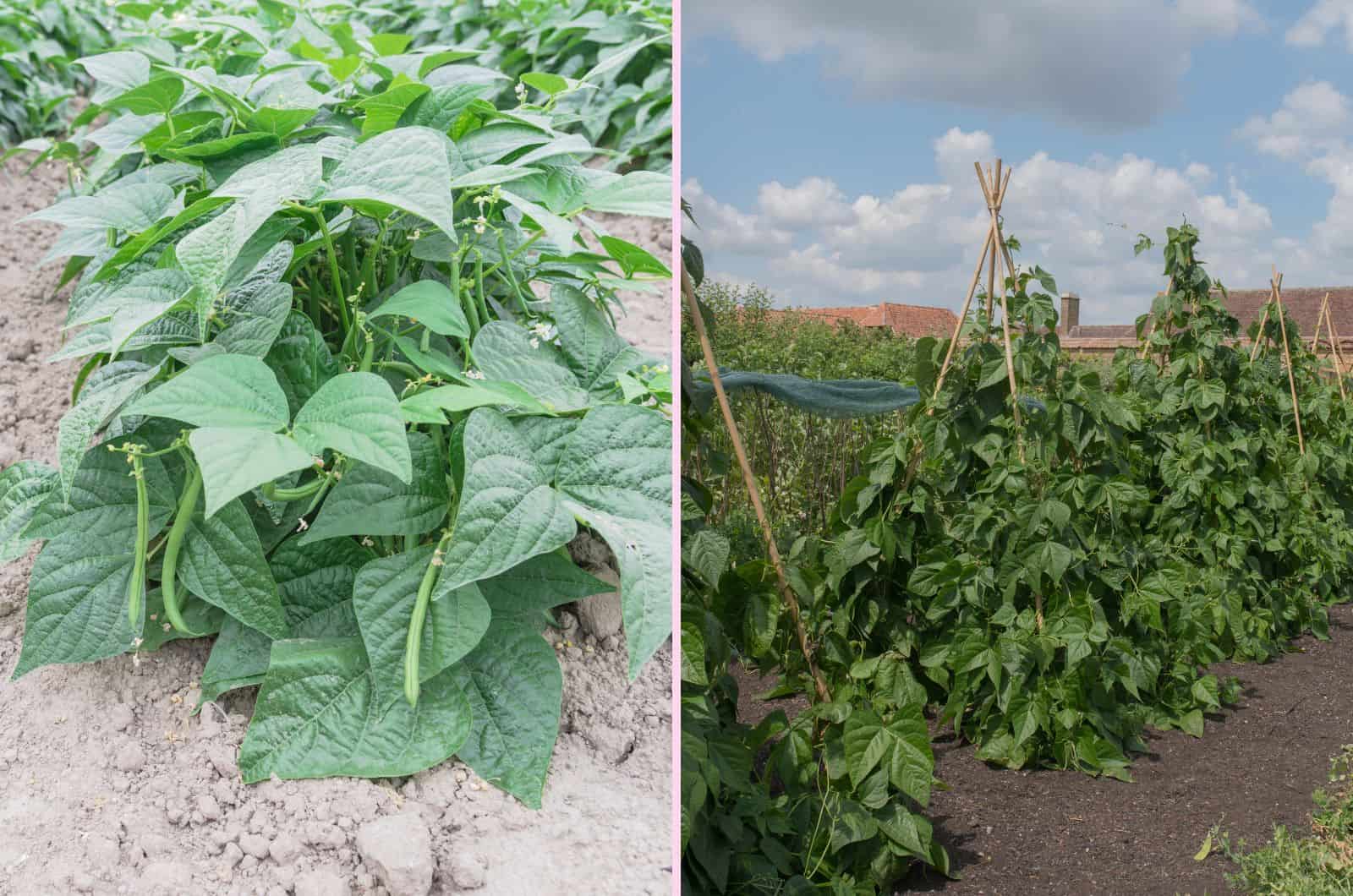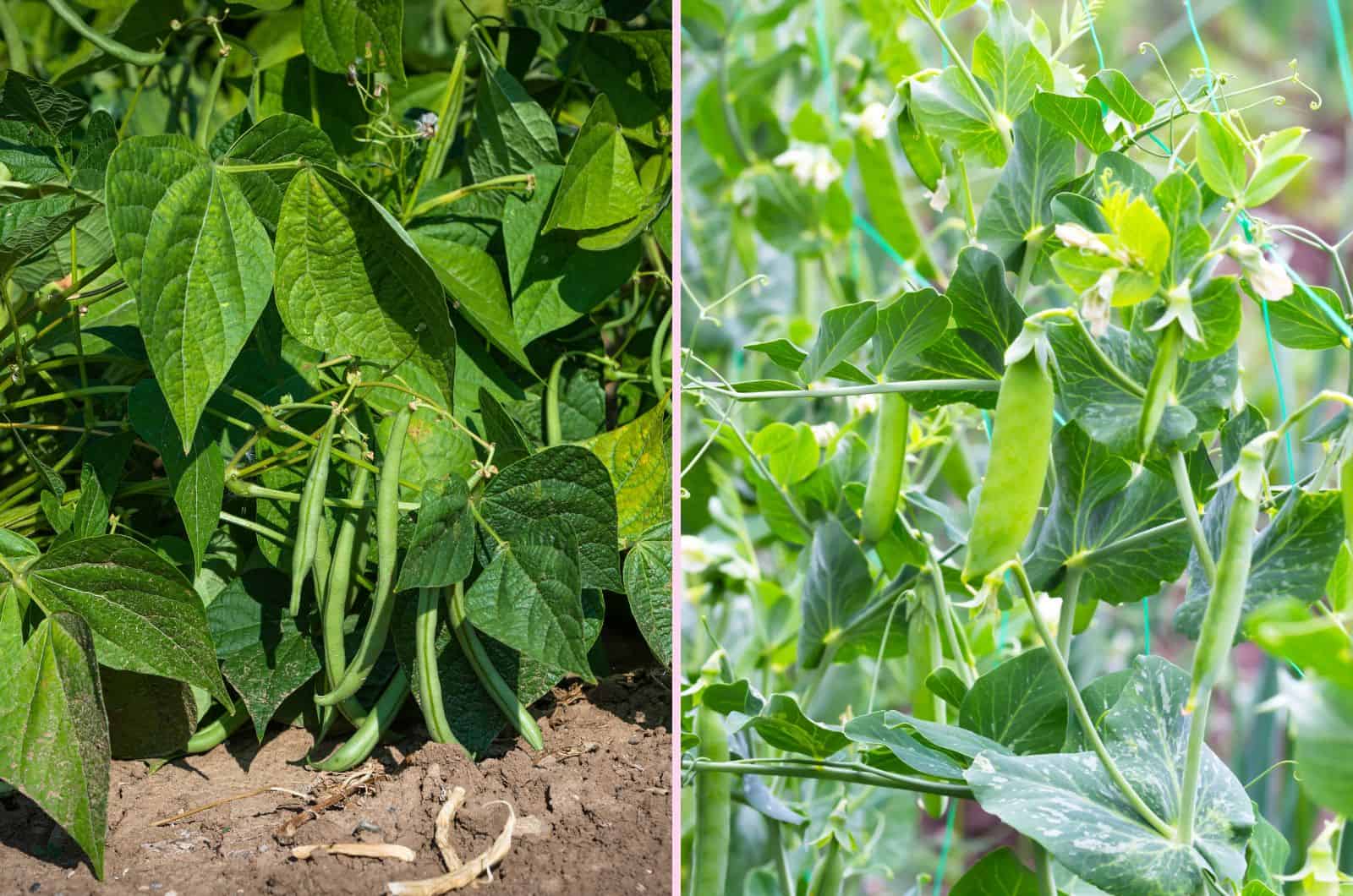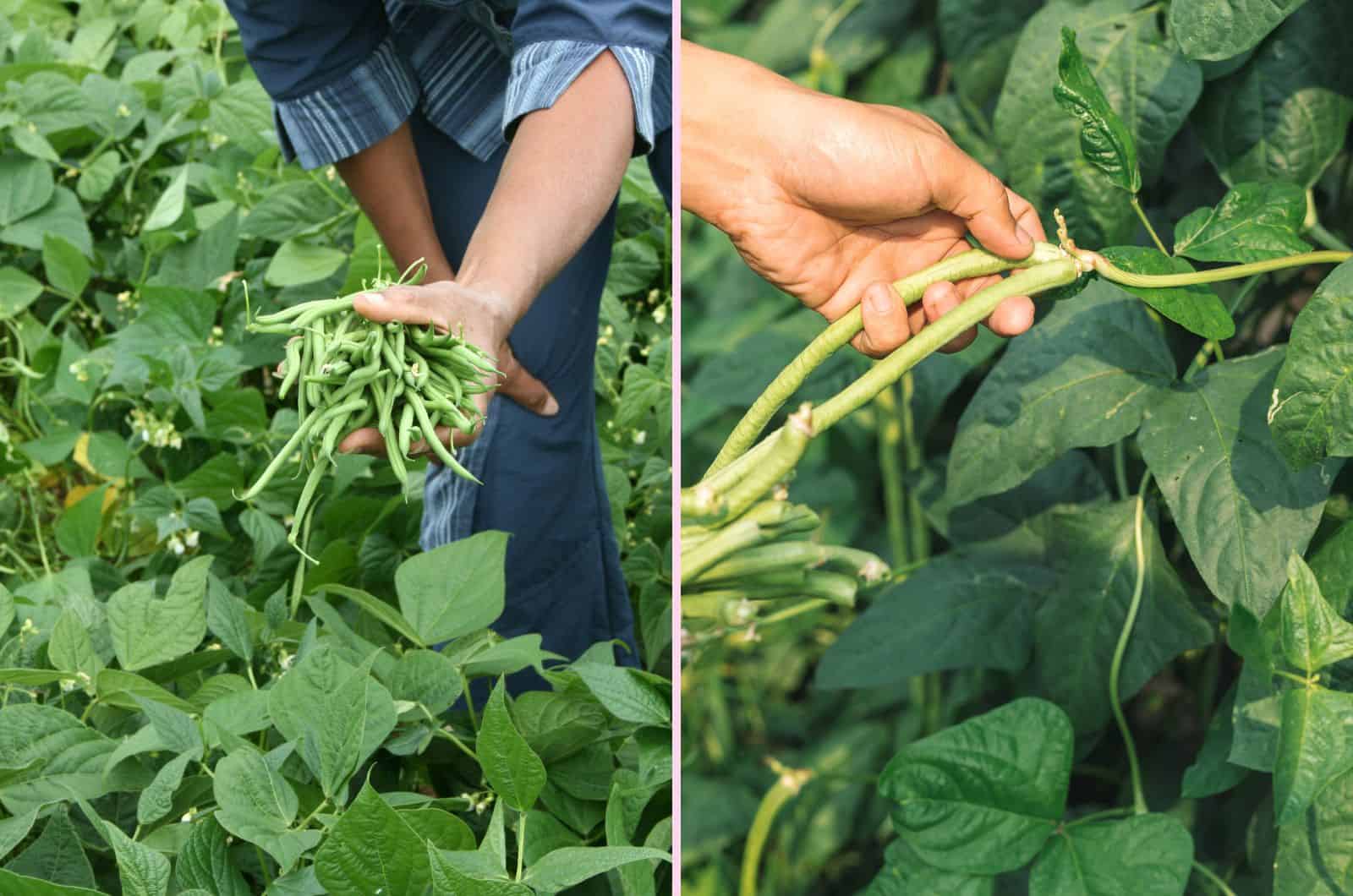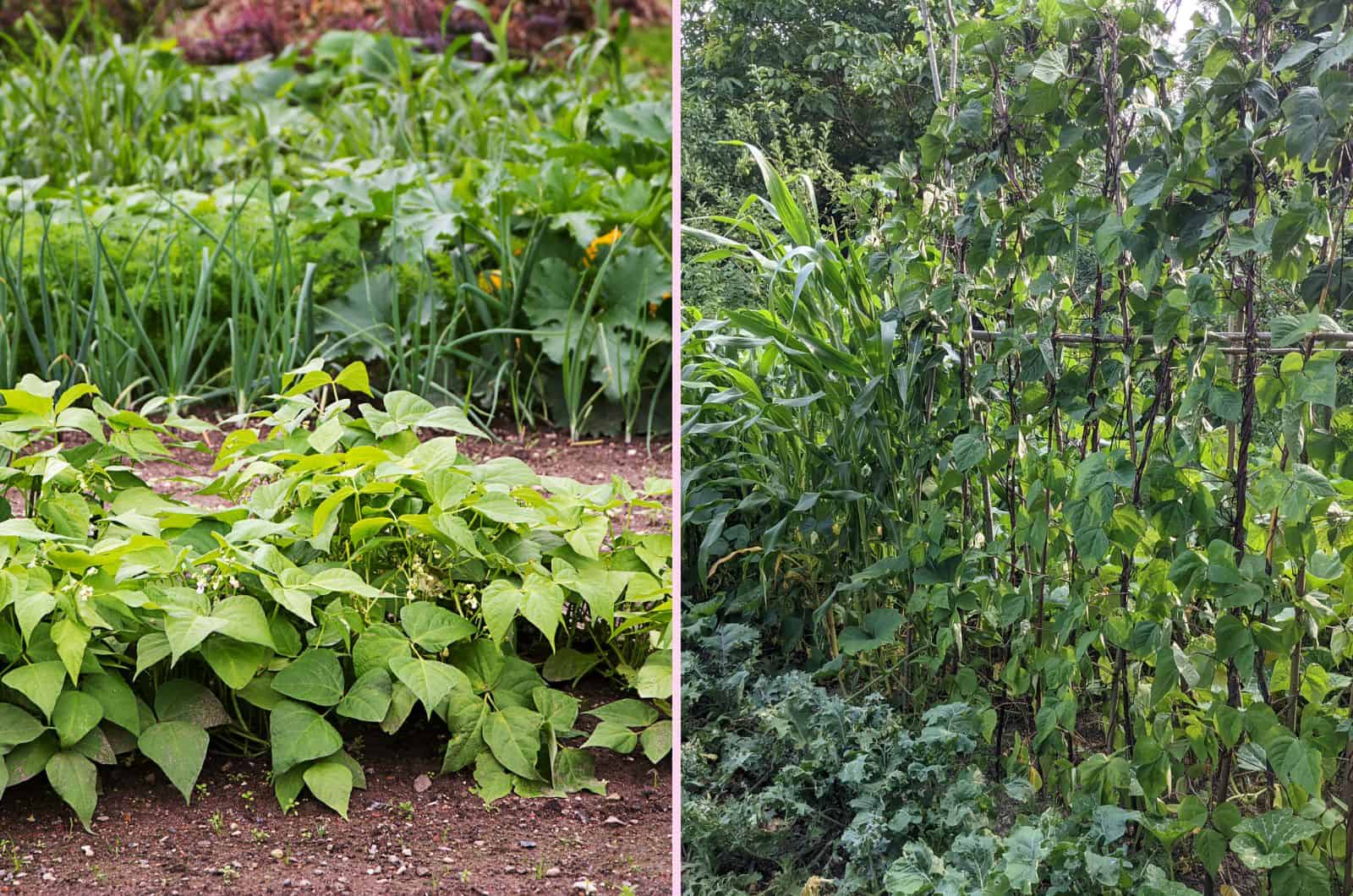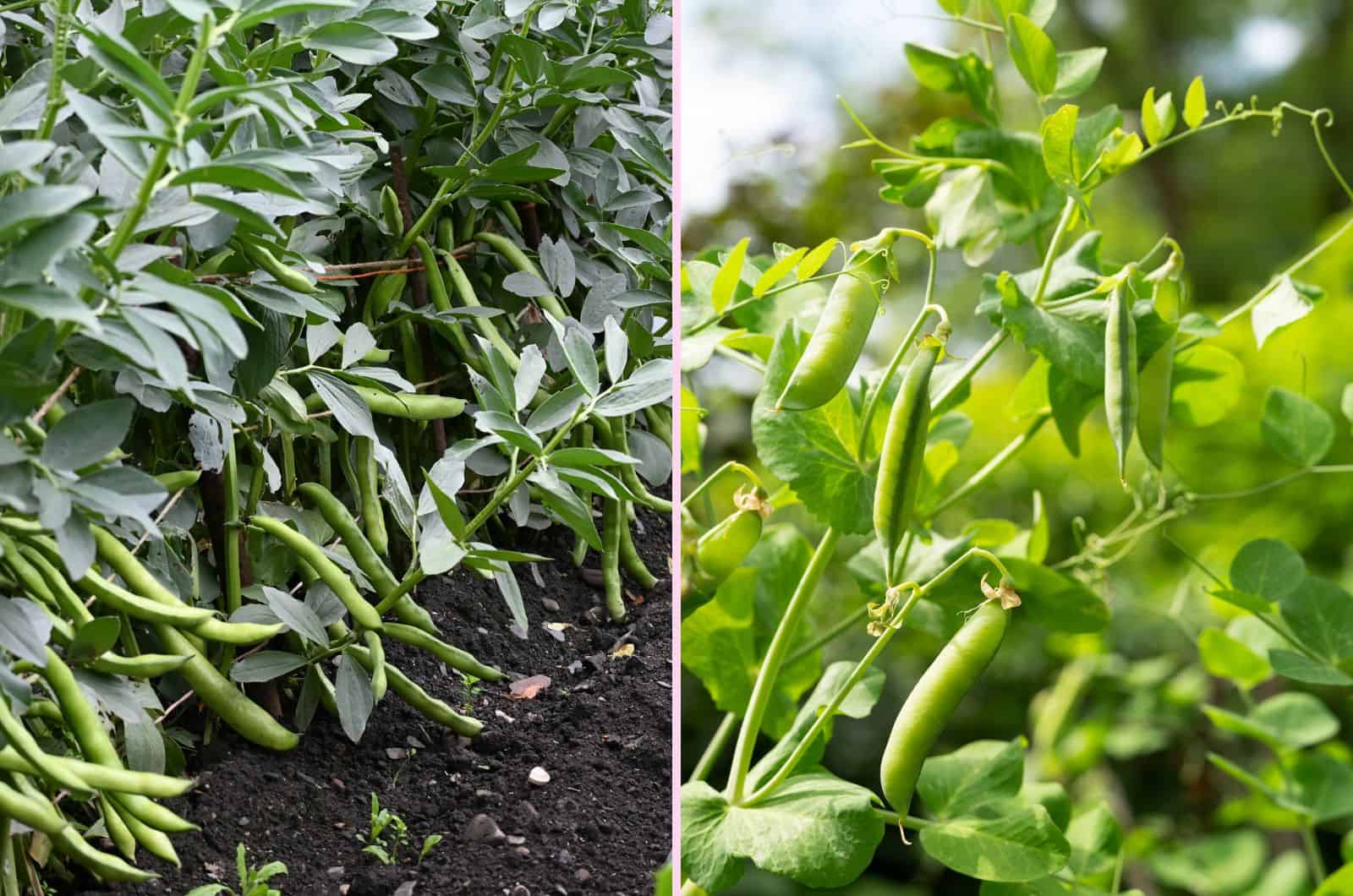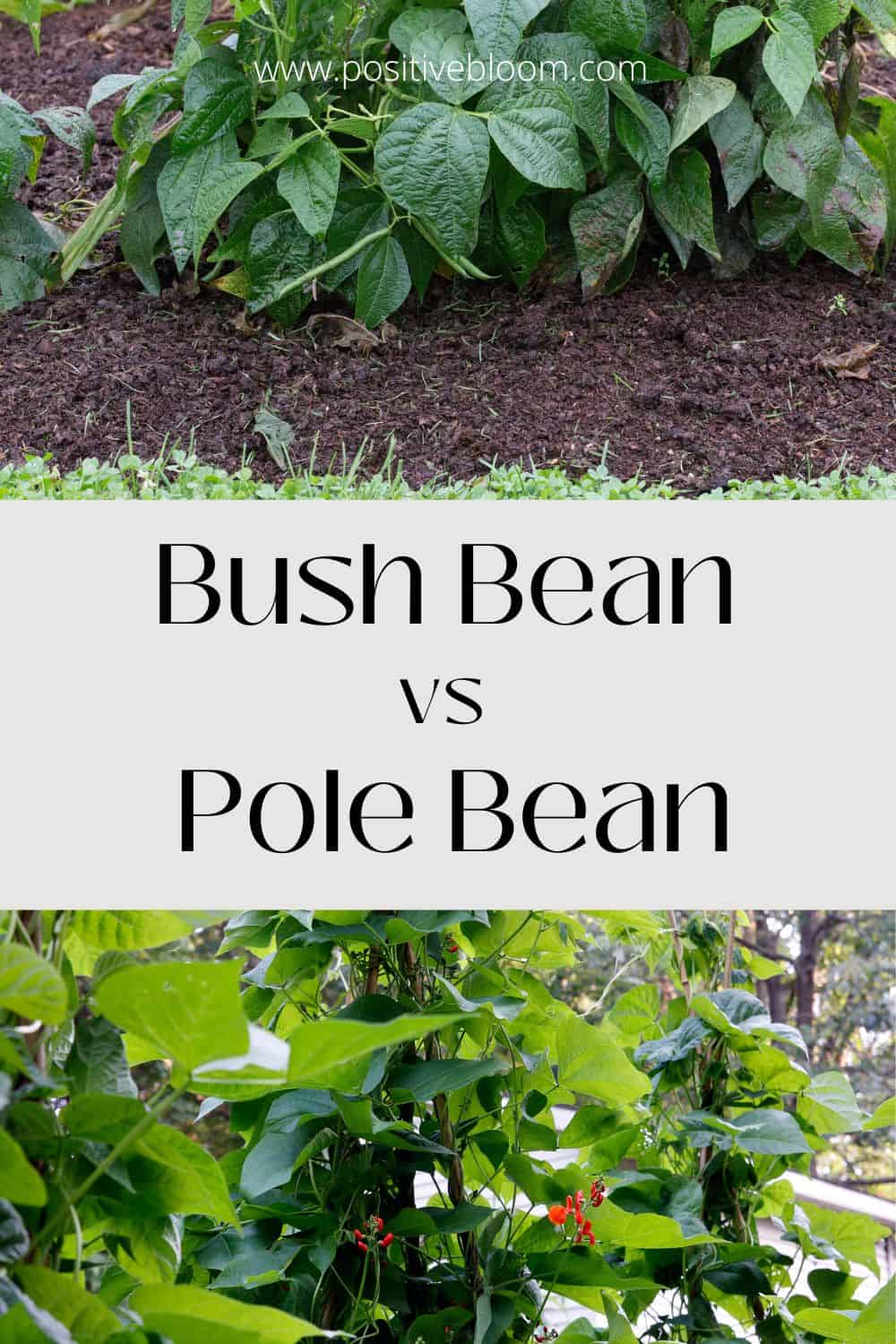Green beans are definitely must-have veggies in the vegetable garden because they are highly nutritious, have numerous health benefits, and they are also relatively easy to grow. Although there are many varieties of beans, they can all be grouped into two types of beans, including bush beans and pole beans.
You will grow either pole or bush beans based on the space in your garden because they have different growth habits, though they ultimately taste the same.
However, there are some other differences that you need to take into consideration when deciding whether to grow either bush or pole beans. If you want to know more, keep reading our analysis on bush bean vs pole bean!
Bush Bean vs Pole Bean: The Main Differences
Green bean plants, also known as snap beans or string beans, are annual, low-maintenance plants that can adapt to various growing conditions. Both bush bean plants and pole bean plants belong to the Wax bean family.
Even though we are basically talking about the same veggie, there are certain differences between these two types of beans. The names are relatively self-explanatory, but there are still some other differences between them.
So, without further ado, let’s dive in!
Growth Habits
As the name suggests, pole beans need a pole to grow properly, whereas bush beans grow completely on their own.
Bush beans are small and compact, and they usually grow about two feet tall. These types of beans are ideal for small gardens and small spaces. They are usually grown in small garden beds like raised beds. When growing bush beans, you won’t have to worry about providing them with extra support so that they can grow big and tall.
Other than planting them in double rows, there are no other requirements when planting bush beans. Bush beans generally grow better in hot and moderate summers.
Pole beans, also known as runner beans, produce long climbing vines that need a trellis or staking for proper growth and development. These climbing beans can reach up to 15 feet tall!
These types of beans are also good for smaller gardens since they grow tall instead of wide, although you will need some space for putting up a trellis, bamboo pole, stake, tepee, or other type of support. In addition, these supports will create shade for the plants around it.
Don’t let these few extra steps prevent you from planting pole beans — they are still relatively easy to grow and will climb stakes like crazy!
Growth habits are their biggest difference, while other things regarding plant care are pretty much the same.
Harvesting Time
Pole beans have a somewhat longer growing season because they take some time to climb and produce those delicious beans. This means that it will take longer for you to harvest beans. Harvesting time is usually around 12 to 16 weeks after planting.
However, this is not the case with bush beans, which will be ready to harvest after only 10 to 12 weeks. These all come at once, so you can keep planting them every two weeks to get a continuous harvest.
Disease Susceptibility
Surprisingly, pole beans are actually more disease-resistant than bush beans. Because bush beans grow in bushy rows that retain moisture and humidity around them, they are significantly more susceptible to disease than pole beans.
This may result in mildew or, more frequently, rust. If either disease strikes after flowering, it won’t significantly affect your crop, but affected leaves need to be cut off to stop the disease from spreading.
Because of the proper airflow they get, pole beans are less prone to fungal disease caused by high moisture and humidity. However, their new shoots are susceptible to aphids, which is why it is recommended to start these plants indoors before transplanting them outdoors once they have grown up to 1 foot tall.
Yields
We have already mentioned that bush beans are produced all at once and you can sow them again to get a continuous harvest. However, pole beans produce higher yields because they take their sweet time to grow and develop.
When comparing a Borlotto bush bean variety with the Borlotto pole bean variety during the course of the growing season, a Borlotto bush bean will yield about 0.5 lb of edible pods. The Borlotto pole bean produces almost twice as many beans per plant, yielding around 1lb per plant.
How To Grow Bush & Pole Beans
Beans are one of the easiest vegetables to grow from seeds. Iron, potassium, magnesium, fiber, vitamins A, K, and C, as well as other minerals that are extremely good for our bodies, are all present in these delicious and healthy veggies.
However, there are some other reasons you should grow beans in your garden!
Beans belong to the Legume family, also known as the nitrogen-fixating family. These plants have the ability to take nitrogen from the air and release it in the soil so that other plants can use it — and we all know that nitrogen is necessary for greenery to grow. This is why green beans are great companions to many plants, including yarrow, carrots, pumpkins, and many more!
Read also: 19 Best Pumpkin Companion Plants & Some Plants To Avoid
Planting Tips
The great thing about green beans is that they can grow in either sandy or clay soil, but they grow best in well-draining soil. They usually prefer pH levels closer to neutral or acidic, and you can also add a little fertilizer to promote their growth.
Bean seeds need to be firmly planted in the ground between 9 and 12 inches apart. After placing the seed in an inch-deep hole, carefully cover it with soil. To accelerate the germination process, water the seeds often for three to four days. Continue to water your plants once every two to three days to maintain their growth.
Bean seeds can be directly sown in the soil, just wait until the last frost has passed and plant them in warm soil to ensure that germination occurs. It is highly unlikely that the seeds will germinate in cold soil.
I would also suggest you invest in high-quality heirloom seeds if you want them to germinate quickly. Seeds will usually germinate in 7 to 14 days.
This applies to both bush and pole beans, just make sure to provide the pole beans with some extra support when they start growing.
Growing Tips
You won’t have to spend much time and energy when growing beans in your vegetable garden. Other than putting up the trellis or creating a tepee, the growing conditions for both bush and pole beans are more or less the same.
Let’s start with the watering first. You should water them frequently, especially if you live in an area with a drier climate. They generally need around 2 inches per square foot each week, or even less in more humid environments.
Mulch is also frequently added around the base of the plant to help retain moisture and prevent weed growth. If you notice that there are still some weeds growing, pluck them out with your own hands so that they don’t steal the nutrients that your plant needs to produce those delicious beans — just be careful not to disrupt the roots of the bean plant!
There is no need for additional fertilization if you added enough nutrients before you planted the seeds. However, if you have forgotten to add some fertilizers at the beginning of the growing season, you can add some when the plant starts blooming instead.
Avoid applying high-nitrogen fertilizer since you will only end up with a few beans and abundant foliage. Halfway through the growing season, some aged manure or compost is a useful alternative to liquid fertilizer.
When pole beans have grown to the top of their supports, pinch the tops off. This keeps them from growing into an unwieldy mass that is entangled, and focuses the plant’s energy on producing more blooms and beans.
In case of high heat, you can use row covers to protect young plants from drying out and losing their tiny blossoms.
You can also check out this video for more information: https://www.youtube.com/watch?v=l3NS09izxYE
Keep An Eye On These Critters
Even though they are relatively hardy, there are still some pesky pests that can attack your bean plant. These are the common pests and insects that invade bean plants:
• Aphids — tiny pests that produce a sticky substance called honeydew. They ingest plant juice and steal the nutrients. Aphids leave yellow and brown spots on the leaves and stem, and they usually reside on the undersides of the leaves.
• Japanese beetles — big, green insects that eat the leaves completely, leaving you with only the skeletons of veins instead of lush green leaves. You can easily spot them and remove them with your hands.
• Cucumber beetles — even though they usually invade cucumbers, these beetles can also attack your bean plant. They leave holes in the leaves and cause stunted growth of plants. What’s also bad is that they transmit bacterial wilt that can completely destroy your plants. Use row covers to protect the plants from cucumber beetles.
• Leafhoppers — gray or green insects that can reduce crop production. They usually leave white spots on the undersides of the leaves, and brown and yellow spots on the surface. Use water and row covers to protect your plants from leafhoppers.
• Root-knot nematodes — small critters that come for the plant’s roots. They feed on the roots, causing numerous issues such as stunted growth, wilting, yellowing, or death. Get rid of them by planting more resistant varieties and using aged compost or manure.
• Whiteflies — they look like moths and are a similar size to gnats. They also release a sticky substance called honeydew. They are sap-sucking insects that reside on the undersides of the leaves. You can use insecticidal soap or pesticides to treat them.
• Slugs/snails — these critters eat the leaves and stems, and they can sometimes eat young seedlings. Avoid adding a thick layer of mulch and overwatering the plants. You can handpick them if you spot any.
Harvesting Tips
There are several harvesting hacks that you can employ to yield the best crops!
First of all, you should harvest beans early in the morning, which is when their sugar levels are at their highest, to get the most delicious and nutritious beans. Next, you should look for pods that are firm, large, and thick. These are often signs that they are ready to be harvested.
Green beans can be harvested when they are still young and sensitive before the seeds have finished growing. Without damaging the plant, snap or cut the beans off.
You should harvest the beans every day because the more beans you harvest, the more beans will grow.
The Best Bean Varieties
There are a lot of options when it comes to planting beans since there are over 400 different types of beans out there!
They usually vary based on their taste and growth habits, though they can all be grouped into bush beans or pole beans or both.
Some of the best bean varieties include:
• String beans/Snap beans — beans that produce longer pods, usually from 5 to 7 inches. Try the ‘Kentucky blue’ variety, which is a pole bean, or you can try the ‘Blue lake’ variety, which can be grown as both pole and bush bean.
• Italian/Romano beans — these beans produce longer and wider pods. The pods are around 6 to 8 inches long. They can endure hot summer temperatures. These are almost all bush varieties, including the ‘Roma II’, and ‘Jumbo’, with surprisingly long pods.
• Chinese long beans — also known as yardlong or asparagus beans, Chinese long beans produce 1 to 2-foot-long pods. The most famous varieties include ‘Red noodles’ and ‘Yardlong’. These are all pole varieties.
• Purple beans — the beans have a unique purple color that turns green when they’re cooked. They produce 5 to 6 inch long pods. These include the ‘Provider’ and ‘Kentucky wonder’, which are both bush beans, though Kentucky can be grown as a pole as well.
• French beans — also called filet or haricots verts, they produce thin pods that are about 3 to 5 inches long. The most famous varieties are all bush varieties, including the ‘Maxibel’ and the ‘Calima’.
Frequently Asked Questions
1. Do pole beans taste the same as bush beans?
Yes, they are the same plant that produces the same beans, although they have different growth habits. The taste might vary between different types of beans.
2. What are the differences between bush and pole beans?
The key difference between bush and pole beans is their growth habits. Pole beans are climbing plants that produce long vines, which means that they will need some extra support for proper growth and development. This usually includes staking, putting up a trellis, or a bamboo pole.
Pole beans can grow up to 15 feet tall, whereas bush beans usually stay low and grow up to 2 feet tall. Bush beans are smaller and don’t need any support when growing.
Bush beans have shorter harvesting times — they usually take 10 to 12 weeks until they are ready to harvest, while pole beans take about 12 to 16 weeks to grow.
However, bush beans are more prone to diseases since they grow in rows close to each other, so proper airflow is prevented.
Pole beans also produce higher yields since they take their sweet time to grow and produce those delicious beans.
3. How long do bush beans take to grow?
Bush beans usually take about 10 to 12 weeks to grow after planting. Some are even ready to be harvested after only 10 weeks. They grow faster than pole beans.
To Sum Up
After our thorough analysis of bush bean vs pole bean, I am sure that you are now able to decide what type of beans to grow in your garden. If you have enough space to install a trellis or put up a stake, then I would suggest you grow pole beans.
You can try and plant them near some veggies that can benefit from shade because they grow tall. This is because they are more disease-resistant, so you won’t have to worry about those pesky pests!
However, growing bush beans is also super easy, and if you keep their growing conditions optimal, I’m sure that those annoying pests will leave your beans alone.
I hope this article was helpful. Have a great growing season, and enjoy your beans.
Until next time!
Like this post? Share or pin it for later!

